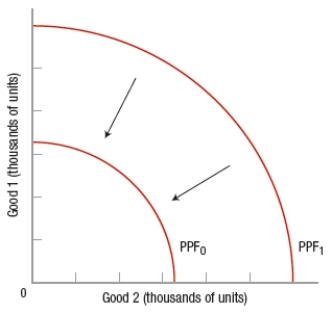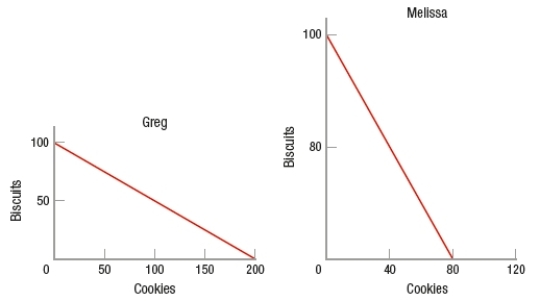A) increasing the number of workers
B) increasing worker productivity
C) shifting preferences of consumers to cheaper products
D) technological change
Correct Answer

verified
Correct Answer
verified
Multiple Choice
A lawyer can argue a case in court for one hour and make $300. She could alternatively use that hour of time to type a legal brief in her office. What is the opportunity cost of her typing the legal brief?
A) nothing, since she would never type a legal brief
B) nothing, since she would always hire an administrative assistant to type for her
C) $300, since that is the amount she could have made by arguing a case in court
D) $13.50, the average hourly wage for a typist
Correct Answer

verified
Correct Answer
verified
Multiple Choice
Human capital is
A) the improvement of labor capabilities from training, education, and apprenticeship programs.
B) the equipment that companies use in the production process.
C) included in land.
D) included in entrepreneurial ability.
Correct Answer

verified
Correct Answer
verified
Multiple Choice
What are the three basic economic questions each society must answer?
A) What to produce? How to produce? For whom to produce?
B) How much to produce? What quality to produce? What price to sell at?
C) What to produce? How much to produce? How to consume?
D) How much goes to the government? How much goes to consumers? How much is exported?
Correct Answer

verified
Correct Answer
verified
Multiple Choice
In economics, capital refers to
A) funds used by businesses to acquire goods and services.
B) the process of raising money in the stock market.
C) manufactured buildings and equipment used in the production process.
D) anything that adds to human capital.
Correct Answer

verified
Correct Answer
verified
Multiple Choice
Points that are unattainable for an economy are shown as points
A) inside the production possibilities frontier.
B) on the production possibilities frontier.
C) outside the production possibilities frontier.
D) of unemployment.
Correct Answer

verified
Correct Answer
verified
Multiple Choice
The conversion of resources to satisfy wants is described as
A) consumption.
B) distribution.
C) production.
D) conservation.
Correct Answer

verified
Correct Answer
verified
Multiple Choice
When society produces the mix of goods and services that are most desired and produces them at the lowest cost possible
A) production efficiency is achieved.
B) allocative efficiency is achieved.
C) production and allocative efficiency are achieved.
D) inefficiency occurs.
Correct Answer

verified
Correct Answer
verified
Multiple Choice
When two countries gain from trade
A) one country must have an absolute advantage over the other in producing all goods.
B) both countries can consume beyond their domestic production possibilities frontiers.
C) one country must have a comparative advantage over the other in producing all goods.
D) both countries must be equal in size.
Correct Answer

verified
Correct Answer
verified
Multiple Choice
In economics, the term "land" includes
A) mostly agricultural land.
B) natural resources, excluding water resources.
C) all natural resources.
D) resources found on the Earth's surface.
Correct Answer

verified
Correct Answer
verified
Multiple Choice
(Table) If Germany decided to produce skirts, what is Germany's opportunity cost? 
A) 2 sweaters
B) 0.5 sweater
C) 1 sweater
D) 0.25 sweater
Correct Answer

verified
Correct Answer
verified
Multiple Choice
(Figure: Interpreting PPF Shifts) According to the graph, which changes may cause the production possibilities frontier to shift inward from PPF1 to PPF0? 
A) increase in the labor force
B) improve the skills of the workers
C) increase government regulation on businesses overall
D) increase in the population
Correct Answer

verified
Correct Answer
verified
Multiple Choice
The theory of comparative advantage says that countries
A) should restrict trade by cutting off all imports.
B) should import those goods they can produce at a lower opportunity cost than another country.
C) can never benefit from specialization in trade.
D) should export those goods they can produce at a lower opportunity cost than another country.
Correct Answer

verified
Correct Answer
verified
Multiple Choice
In a planned economy, most of the productive resources are owned by
A) households.
B) business firms.
C) the government.
D) foreign countries.
Correct Answer

verified
Correct Answer
verified
Multiple Choice
"The economic wealth of this country was built primarily by some individuals profiting from a transaction, whereas others were harmed by that transaction." This statement indicates that its author
A) fails to understand the fallacy of composition.
B) fails to understand that all voluntary trades benefit both parties involved.
C) fails to understand the significance of the production possibilities frontier.
D) uses sound economic thinking-the statement is essentially correct.
Correct Answer

verified
Correct Answer
verified
Multiple Choice
Which items restrict our choices so that we must make tradeoffs?
A) time and money
B) money and personal preferences
C) time and personal preferences
D) time, money, and personal preferences
Correct Answer

verified
Correct Answer
verified
Multiple Choice
Entrepreneurs receive profits for their efforts primarily because they
A) combine land, labor, and capital to produce goods and services.
B) combine land, labor, and capital to produce goods and services and assume the risks associated with business.
C) assume the risks associated with business.
D) have the best ideas.
Correct Answer

verified
Correct Answer
verified
Multiple Choice
(Figure: Biscuits and Cookies PPFs) Greg and Melissa face the production possibilities frontiers shown for biscuits and cookies. When Melissa completely specializes in producing the good she has a comparative advantage in, she produces 
A) 160 biscuits and 80 cookies.
B) 0 biscuits and 80 cookies.
C) 80 biscuits and 40 cookies.
D) 160 biscuits and 0 cookies
Correct Answer

verified
Correct Answer
verified
Multiple Choice
A country operating inside of its production possibilities frontier (PPF) is operating
A) efficiently.
B) inefficiently and at an unattainable level.
C) inefficiently but in an area that can be attained.
D) in the unattainable region.
Correct Answer

verified
Correct Answer
verified
True/False
Allocative efficiency ensures that the goods and services demanded by society are produced.
Correct Answer

verified
Correct Answer
verified
Showing 201 - 220 of 346
Related Exams